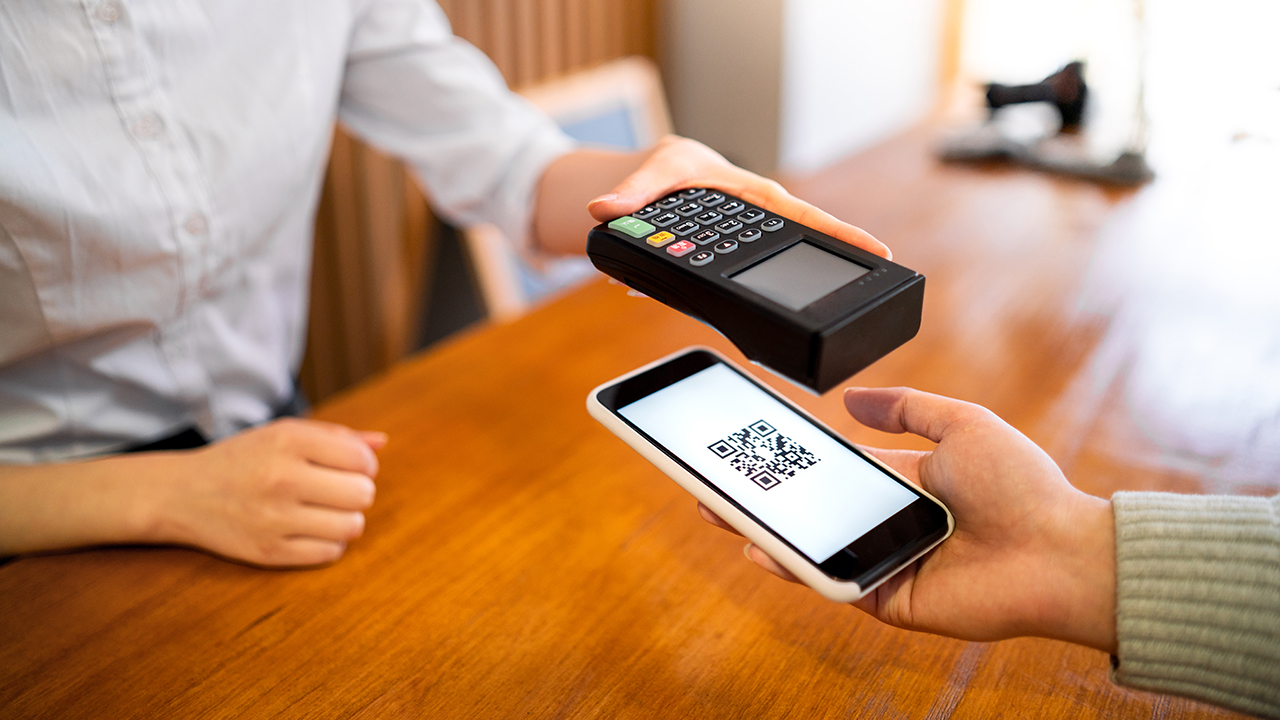通过利用 4G LTE 和 5G 连接,零售商可以为顾客提供在店内和网上发现和访问产品与服务的新方式。目前,5G 的采用率仅为 13%,但这种情况不会持续太久。
最近对美国零售商的调查显示预计到 2024 年,5G 的采用率将增加两倍。
从数字标牌和自补充库存系统到实时支付平台,许多领先的零售商已经将 4G 和 5G 连接集成到其业务的方方面面。随着店内服务的发展,所产生的数据量以及零售商利用这些数据所能解决的挑战也在不断增加。
为了利用这些数据并大规模提供现代化的数字体验,当今的零售商需要在技术基础设施和环境条件千变万化的场所实现快速、可靠的连接。尽管存在这些挑战,零售商仍可利用 4G LTE 和支持 5G 的设备,在竞争日益激烈的市场中实现业务目标。

零售业互联使用案例的范围
迄今为止,4G LTE 网络 已投入商业使用十多年,在此期间,各行各业的企业都开发出了令人兴奋的新用例,这些用例是前几代网络技术无法实现的。
如今,竞争对手正竞相利用5G 网络 带来的更高带宽和更快吞吐量的优势。由于更强大、更快速的 5G 网络日益普及,零售商可以部署各种对速度和带宽要求极高的应用,从实时库存管理到具有安全可靠交易功能的自助终端连接,甚至是扫描商店并提醒工人补货的机器人。展望未来,我们将看到零售商利用增强现实和虚拟现实等技术拓展令人兴奋的新用例,实现虚拟 "试穿 "应用。
随着 5G 网络的快速部署,零售商可以利用 AI/ML 为顾客提供更具吸引力的店内体验。无论是用于千变万化展示的数字标牌,还是结账时的销售点(POS)系统,IoT 设备都已成为将现代零售体验带入生活的重要工具。
每天,零售商必须处理从管理库存和员工安排到测试新的销售策略、促销活动和店内陈列等一切事务。随着这些年来许多核心活动的数字化,零售商发现了优化运营的新机遇,以实现最高效率、客户满意度和业务增长。
4G 和 5G 在零售业的未来应用案例
POS 系统或店内信息亭通常是零售商在开始采用 4G 或 5G 时最常见的起点。售货亭给零售商带来了特别有趣的挑战,因为它们可以放置在店面之外。无论是室外还是购物中心或活动场所等大型建筑的一部分,这些设备通常都需要:
高带宽、低延迟无线连接。
能够承受多变的条件。
发生物理或数字漏洞时的安全能力。
如今,零售商正在部署越来越多的物联网 (IoT) 设备,使他们有机会收集更多的现场数据,更智能地运营,并涉足更先进的互联使用案例。因此,这三项要求对零售商的业务成功变得更加重要。
随着 5G 技术在行业内的普及,大型零售企业可以利用基础设施管理解决方案对零售点进行大刀阔斧的改革。有了合适的管理平台,经营数百家甚至数千家店铺的企业只需点击几下,就能更新数字显示屏上的价格、信息亭上的软件等。
.jpg)
识别实现零售业互联用例的障碍
现在,顾客对所有零售体验中的最新信息、个性化体验和无缝服务有着巨大的需求。他们希望尽可能多地了解价格、店内库存、基于购买历史的评论以及轻松的结账流程。
要满足这些期望,就必须建立起强大的全渠道购物体验,并结合智能供应链,而这对许多零售商来说都很困难。麦肯锡最近的研究表明,在数字化竞争中处于领先地位的零售商有一个共同优势:为下一轮转型设计的技术基础。
企业选择部署的网络是任何实时或个性化体验的基础。它的速度、安全性和弹性会对依赖该网络进行数据传输的每个设备和系统产生下游影响。
在任何行业,企业通常都有几种可行的连接方式。例如,使用 Wi-Fi 网络或专用蜂窝网络。每种选择都有很大的利弊,零售商需要根据其所需用例的技术和业务要求进行权衡。
什么网络技术适合我?Wi-Fi、蜂窝还是两者兼有?
要决定是部署 Wi-Fi 网络还是专用蜂窝网络,或者两者兼而有之,零售商需要考虑这些问题:
连接设备的可靠性对于业务交易的继续是否至关重要?
设备、系统和分布式站点之间的数据传输速度是否会影响所需的用例?
技术人员如何管理一个或多个地点的大量联网设备?
与专用蜂窝网络相比,Wi-Fi 网络可能更不可靠,安全性也更低。再以购物中心的信息亭为例,离线 Wi-Fi 连接可能会给当今的零售企业带来巨大的机会成本。仅在过去几年中,全球交互式信息亭市场就出现了爆炸式增长。预计到 2031 年,该市场规模将达到 499 亿美元,比 2019 年的 161 亿美元大幅跃升。
即使在 Wi-Fi 网络提供足够带宽和覆盖范围的情况下,蜂窝网络也可以作为关键数字服务的覆盖层。专用蜂窝网络还能让零售商更快地开设新店,因为部署蜂窝网络要比在新建筑或开发项目中挖沟、安装和修补有线网络快得多。
因此,越来越多的零售商正在体验 5G 连接带来的商业利益和成本节约。不久的将来,采用 5G 连接将成为具有竞争力的零售企业的桌面赌注。
零售连接何时选择 4G LTE 解决方案,何时选择 5G 解决方案
通过专用蜂窝网络实施连接用例可让商店保持灵活性并降低成本。IT 系统和设备可以轻松搬迁,因为整个商店都可以从一个网络接入点获得强大的信号。
此外,有了 5G 路由器,零售商就能以快速的速率可靠地传输大量数据。因此,它们可以在整个本地网络中快速收集和发送数据,从而可以在数字标牌上实现视频流、向购物者的设备发送个性化提醒等功能。
零售商可以使用 Digi4G 和 5G 解决方案(包括Digi EX12、Digi EX15和Digi EX50 蜂窝路由器)支持室内使用案例,例如:
自助售货机和自动取款机等店内信息亭
具有静态、动态和流媒体内容的室内数字标牌
POS 系统和智能库存
用于虚拟试穿、安全和其他应用的高分辨率视频处理和成像技术
有了Digi EX50蜂窝路由器,零售商就可以为未来采用5G技术的设备网络做好准备,以应对任何需要更快数据传输或更高带宽连接的用例。与此同时,零售商还可以在其网络中加入 Digi EX12 和 Digi EX15 路由器,在 4G 连接仍能满足其需求时提供更经济实惠的选择。通常情况下,零售商在开始数字化转型时会先考虑特定的用例,然后在看到效益后再添加其他用例。
Digi 还提供工业 4G 解决方案(包括Digi IX20 和Digi IX30 蜂窝路由器),适用于户外零售使用案例,这些案例需要专为� �变环境条件设计的设备,例如:"Digi IX20 "和 "Digi IX30 ":
户外 POS 系统
互动式户外显示屏或数字广告牌
无人值守零售亭,如商品自动售货机、加油泵、电影租赁亭和自动取款机
实时智能监控的安全摄像机

与 Digi 携手扩展零售业的 4G 和 5G 设备管理
Digi 零售解决方案共同提供了一种集成的连接体验,使零售商能够支持所有环境中的使用案例。零售商可以从 ® 提供的简化控制中获益。 Digi Remote Manager® 提供的简化控制,无论他们是将IoT 设备部署在受控的室内环境中,还是部署在供应链中更具挑战性的环境中。
Digi 的 4G 和 5G 连接解决方案套件旨在实现无缝集成,提供值得信赖的性能和零售商可以信赖的可用性。包括Digi EX50在内的大多数Digi路由器都具有双SIM卡插槽,这使用户能够在覆盖不稳定的地区或在网络意外停机的情况下计划运营商故障切换。
与这些蜂窝解决方案和DigiAnywhereUSB® Plus相结合,Digi Remote Manager ,提供零售商扩展其连接使用案例所需的大规模配置、网络合规性和带外管理。Digi的远程管理平台使企业能够轻松地将其IoT 平台与首选的基础设施管理产品集成,例如:Digi AnywhereUSB®、Digi AnywhereUSB® Plus和Digi AnywhereUSB® Plus:
Opengear 实现业务连续性和网络弹性
管理网络即服务解决方案Ventus
用于零售和供应链监控和管理解决方案的SmartSense
有了 Digi,零售商可以依靠单一的IoT 指挥中心,大规模实施先进的数据驱动用例,同时降低无线连接成本,最大限度地减少计划外网络停机时间,改善客户体验。通过接管许多劳动密集型的人工任务,Digi Remote Manager ,零售商可以通过以下方式提高效率、安全性和生产力:
在日常信息技术维护中减少人为错误的风险
实施持续扫描和自动固件更新
无需现场维护,同时通过可定制的通知让团队了解最新情况
防止对设备或网络配置进行未经授权的更改
让 IT 人员专注于价值更高的工作

借助 Digi 提升您的零售能力
从时尚和消费类电子产品到技术和家用电器,各行各业的零售商都已转变业务模式,以利用对数字购物体验的需求。尽管这一趋势十分普遍,但许多零售商仍在努力实现 IT 和IoT 基础设施的现代化,而这些基础设施尚未做好充分准备,无法满足他们保持相关性和竞争力所需的互联用例。
借助 Digi EX50 5G,零售商可以利用当今最快的可用网络优化客户体验,从而提高销售额、满意度和品牌忠诚度。通过Digi Remote Manager ,零售企业可以轻松管理庞大的蜂窝路由器和联网设备群,从而在整个零售供应链中提供互动体验并利用实时智能。
了解更多有关Digi 5G 解决方案如何释放零售企业所需的无线网络功能的信息。
下一步工作